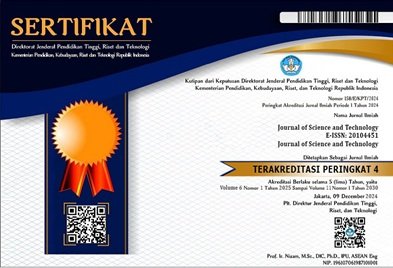Isolation And Decolorization Of Indigenous Bacteria For Eco-Friendly Treatment Of Textile Waste Pollutants
Kata Kunci:
Indigenous bacteria, textile waste, decolorization, eco-friendlyAbstrak
The boiling process is the one of the methods used to treat fabric materials,
which can result in non-dissolvable waste. One of the approaches to overcome industrial waste is through the implementation of for decolorization. Commonly, waste management frequently used for decolorization are coagulation and filtration. But this management produce side waste like sludge. The using potency of microorganism is developing of all the aspect in life. The degradation with eco friendly and doesn’t produce side waste. This microorganism has important role at the cycle of biogeochemistry and living of metabolism in the world naturally. It have a capability to reduce the toxic compound and many pollutants.It can have benefit in bioremediation. All of those of microorganism is a part of biodiversity of Indonesia. It can isolated from cover land and the ocean. Isolate of potencial microorganism can isolated from industrial waste, include industry of textile. Isolated bacteria of indigenous from the waste is the bacteria which have ability the good adapt in waste condition, ithave enzyme activity for decolorization process to change into the simply compound. It can be separated onto sourceof nutrition for its development. This research aims to isolate of potencial bacteria to decolorize waste textile. The bacteria is isolated from the land in waste textil area at Bandung city. Getting isolate of bacteria with the growth of sample in Nutrient Agar Medium. That isolate will grow and identified in morphology form. This research to get indigenous potencial bacteria and to know the optimum condition for decreasing the pigment from the waste textil. The decolorization using the concentrateof 50, 100 and 200 mg/L with Submerged Fermentation (SmF) or submerged fermentation, according Hernandez, (2008) and Bergsten-Torralba, (2009). The efficiency of decolorization from the various of concentration follow the comparison of pigment from starting concentration in % form. Finally, getting the genus Bacillus spp, it can reduce the level of pigment until 90% at the concentration pigment at 100 mg/L.





